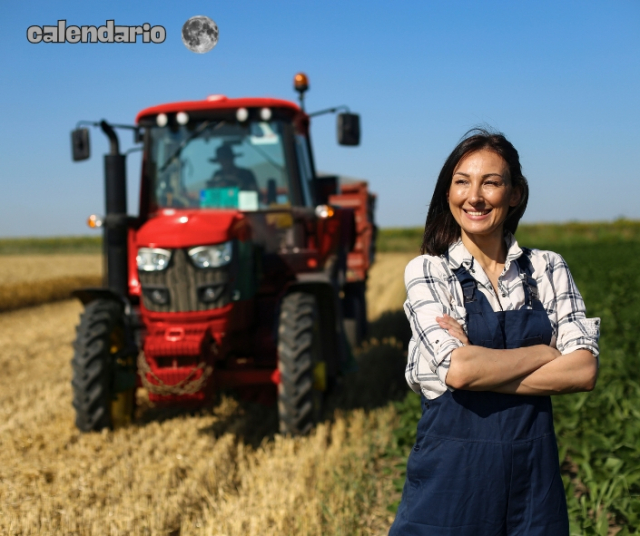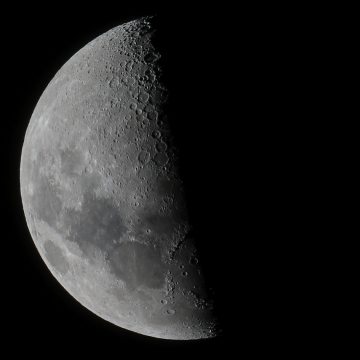Agriculture is an activity that is deeply rooted in natural cycles, and one of the most important factors that farmers have taken into account for centuries is the influence of the Moon. It is believed that different lunar phases can affect plant growth and crop yields. In this article, we will explore in detail each of the lunar phases for November 2024 and how they can influence the best day to grow or sow based on the Moon.
Moon Phases for November 2024:
- New Moon: October 30, 2024.
- Crescent Quarter: November 7, 2024.
- Full Moon: November 15, 2024.
- Last Quarter: November 22, 2024.
The Importance of the Moon in Agriculture:
The belief in lunar influence on agriculture is based on the idea that the Moon exerts a gravitational influence on the Earth, which can affect fluids in the soil and the growth of plants. Although it may sound like superstition, many farmers have observed for generations that certain moon phases seem to coincide with better crop growth and increased productivity. Modern science is still studying this relationship, but many continue to use the lunar calendar as a guide for their agricultural practices.
New Moon:
The New Moon marks the beginning of a new lunar cycle, when the Moon is aligned between the Earth and the Sun, and its illuminated side is not visible from Earth. In agriculture, the New Moon is considered an optimal time to plant crops that produce underground, such as tubers and roots. This is because it is believed that during this lunar phase, the Moon's energy is at its lowest, allowing the seeds to absorb more water and nutrients from the soil.
For farmers planting crops such as potatoes, carrots and onions, the New Moon is an auspicious time to prepare the soil and sow seeds. It is believed that plants have a greater ability to root during this lunar phase, which can result in a stronger root system and better nutrient uptake. Additionally, the lack of direct moonlight can help reduce competition from weeds, which promotes the growth of newly planted crops.
Crescent Quarter:
The First Quarter occurs about a week after the New Moon, when the Moon begins to show increased visibility in the night sky. During this lunar phase, lunar energy is believed to be on the rise, which can have a stimulating effect on plant growth. Therefore, the First Quarter is an ideal time to plant crops that produce above ground, such as fast-growing fruits and vegetables.
Farmers who grow crops such as tomatoes, squash and corn can benefit from planting during the First Quarter. It is believed that plants have a greater ability to develop stems and leaves during this lunar phase, which can result in more vigorous growth and greater resistance to disease. Additionally, increased moonlight can help improve photosynthesis, which contributes to healthy plant development.
Full moon:
The Full Moon is a lunar phase that has been shrouded in myths and legends throughout history. During this period, the Moon reaches its fullness and maximum brightness in the night sky. In agriculture, the Full Moon is considered a time for rest and reflection, rather than a time for planting or growing activities.
It is believed that during the Full Moon, lunar energy is at its highest, which can have a calming effect on plants and animals. Therefore, this is a good time to observe and evaluate crop growth, as well as perform general maintenance tasks in the field. However, it is recommended to avoid planting or transplanting plants during this lunar phase, as they may be less receptive to changes in their environment.
Waning Quarter:
The Last Quarter marks the end of the lunar cycle, when the Moon begins to decrease its visibility in the night sky. During this phase, lunar energy is believed to be in decline, which can have a consolidating effect on plant growth. Therefore, the Last Quarter is an optimal time to carry out pruning, transplanting and harvesting tasks in the field.
During the Last Quarter, it is recommended to focus on removing weeds, pruning vigorous plants, and harvesting mature crops. Additionally, this is a good time to transplant perennials and divide those that have become too large for their current location. In short, the Last Quarter is a period of consolidation and preparation for the next cycle of growth in the field.
Farming is an activity that requires careful planning and attention to detail, and the Moon's influence can play an important role in the success of a crop. In November 2024, those who want to optimize their crop yields can consider the different lunar phases and how these can influence the best day to sow, cultivate and harvest based on the Moon. Whether seeking to stimulate rapid growth, promote healthy development, or maximize crop production, each lunar phase offers unique opportunities to improve plant performance and health. Ultimately, choosing the best day to grow or plant will be influenced by the specific needs of each type of crop, as well as the individual preferences and personal beliefs of the farmer.






